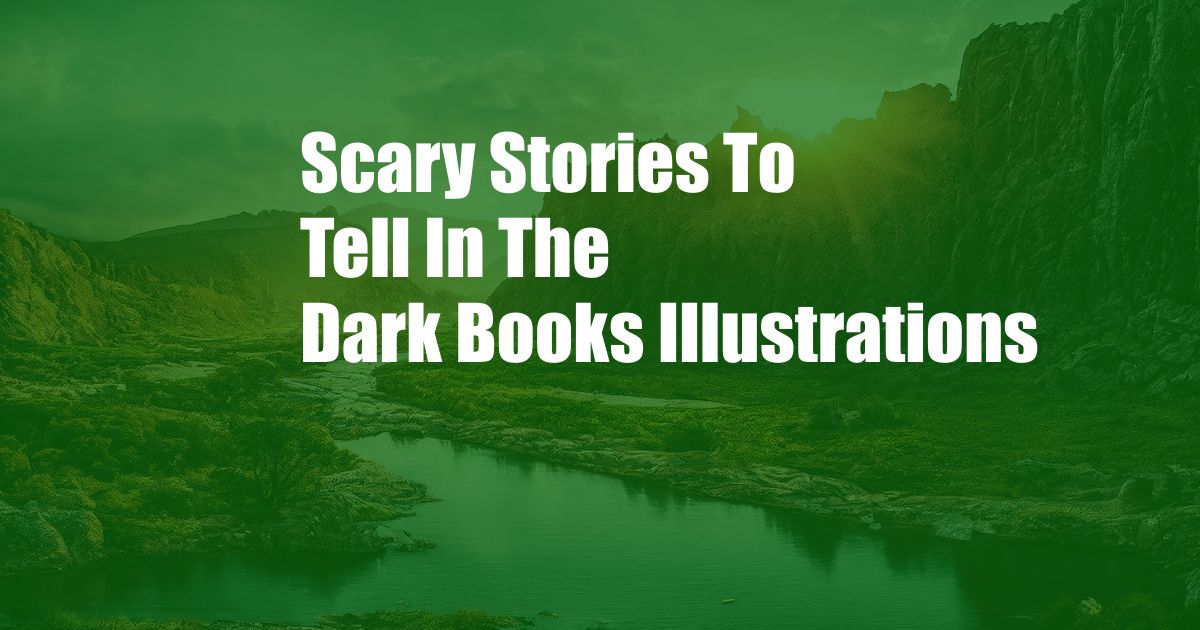
Scary Stories to Tell in the Dark: The Art of Terror
As a child, I was captivated by the eerie tales that filled the pages of Alvin Schwartz’s Scary Stories to Tell in the Dark. The haunting stories and nightmarish illustrations left an indelible mark on my imagination, sparking a lifelong obsession with the macabre.
The art of Scary Stories to Tell in the Dark transcends its literary content. The striking illustrations by Stephen Gammell serve as a visual symphony of horror, etching themselves into the reader’s mind like indelible ink.
Stephen Gammell’s Terrifying Vision
Stephen Gammell’s illustrations are not merely embellishments; they are integral to the terror that pervades Scary Stories to Tell in the Dark. His grotesque creatures, gaping jaws, and haunting eyes bring the stories to life in a way that lingers long after the book is closed.
Gammell’s use of stark black and white creates a sense of unease, as if the darkness itself is alive and waiting to consume the reader. The characters’ expressions convey a primal fear that resonates with an ancient terror. His artwork transforms the pages into a visual nightmare that will haunt the dreams of even the most steadfast readers.
The Importance of Imagery in Storytelling
The illustrations in Scary Stories to Tell in the Dark highlight the profound impact of imagery in storytelling. Visual representations can evoke powerful emotions and create a visceral connection between the reader and the narrative. By using his unique artistic style, Gammell amplifies the terror of the stories, creating an immersive experience that stays with the reader long after the last word is spoken.
The use of imagery in literature is not new. From Dante’s Divine Comedy to Poe’s The Tell-Tale Heart, writers have employed visual language to heighten the impact of their stories. Gammell’s illustrations in Scary Stories to Tell in the Dark continue this tradition, proving that the power of a single image can rival that of a thousand words.
The Psychology of Horror
Gammell’s illustrations tap into the primal fears that reside within us. The grotesque creatures and disturbing imagery evoke a sense of vulnerability and unease. By confronting these fears through the safety of a book, readers can experience a cathartic release and a sense of triumph over their own anxieties.
The psychology of horror is a complex field that explores the human fascination with the macabre. Scholars have suggested that horror stories and images can provide a safe outlet for the expression of repressed emotions and fears. By engaging with these darker aspects of the human psyche, we can gain a deeper understanding of ourselves and the world around us.
Tips for Creating Effective Horror Illustrations
Aspiring artists who wish to create their own spine-tingling illustrations can learn from Gammell’s masterful techniques. Here are a few tips:
- Use strong contrast: Darkness and light can create a powerful sense of tension and unease. Consider using black and white to amplify the contrast and create a stark, dramatic effect.
- Focus on emotions: Convey the raw emotions of fear, terror, and despair through the expressions of your characters. Pay attention to subtle details, such as wide eyes, gaping mouths, and trembling hands.
- Experiment with perspective: Unusual angles and perspectives can evoke a sense of disorientation and unease. Try placing your characters in precarious positions or viewing them from a distorted perspective.
Expert Advice from the Master
In a 2011 interview, Gammell provided invaluable advice for aspiring horror illustrators. He emphasized the importance of authenticity: “The best way to create effective horror is to draw from personal experiences and emotions that truly scare you.”
Gammell also stressed the need for meticulous planning: “Think carefully about the details of your illustrations. The smallest details can make a big difference in creating a sense of atmosphere and setting the mood.”
FAQs on Scary Stories to Tell in the Dark Illustrations
Q: Why are the illustrations in Scary Stories to Tell in the Dark so unsettling?
A: Gammell’s use of stark black and white, grotesque creatures, and haunting expressions creates a sense of unease and primal fear.
Q: What is the significance of the contrast between light and darkness in the illustrations?
A: The contrast between light and darkness emphasizes the struggle between good and evil, creating a sense of tension and suspense.
Q: How can I create effective horror illustrations?
A: Focus on emotions, use strong contrast, experiment with perspective, and draw inspiration from personal experiences.
Conclusion
Scary Stories to Tell in the Dark has left an undeniable mark on the world of horror literature. Stephen Gammell’s haunting illustrations are a testament to the power of visual storytelling, amplifying the terror of the stories and creating an unforgettable experience for readers. Whether you are a devoted fan or a curious newcomer, I encourage you to explore the eerie brilliance of Scary Stories to Tell in the Dark. Its illustrations will continue to inspire and terrify generations to come.
Do you have any questions or thoughts about the illustrations in Scary Stories to Tell in the Dark? Feel free to share your comments below.